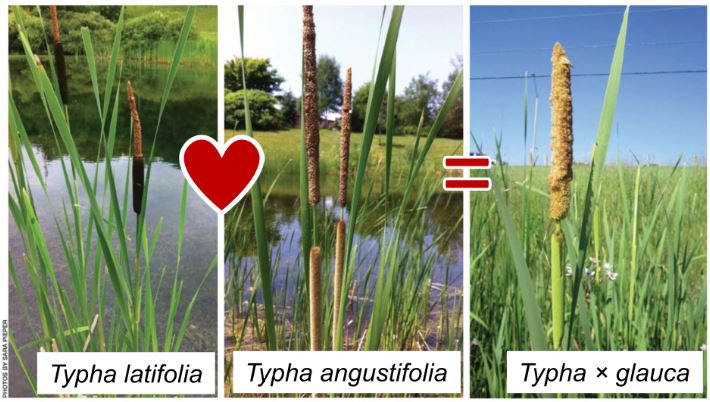This is the first post of a new series, celebrating the brilliant winners of the #plantscistory2021 contest and their stories.
Dr. Verena Sesin is an environmental toxicologist and recent graduate from Trent University, where she researched the effects and fate of contaminants in wetland plants. Verena has spent five years studying invasive plants in Canada for her M.Sc. and Ph.D. studies. In this role, she has grown several plants including cattails (Typha) herself. As a passionate science communicator, Verena also blogs and tweets about her plant research and related work.
For our #plantscistory2021 contest, she presented a Typha species story on Twitter explaining why the correct identification of a particular Typha species matters when caring for the health of wetlands.
She kindly accepted to answer some questions about her interest in this topic and the process to create her story.
How did you build the story? What was the process of creating it?
Following the guidelines of a maximum of 4 tweets, I started with outlining the story in 4 key points and followed this structure when creating the thread. I designed the first tweet as a teaser, using a question to connect to the readers’ personal experiences and catch their attention. The first tweet also contains an unexpected fact which aims to create interest in continuing to read the thread to find out the explanation. The following tweets provide concise information presented in engaging, non-technical language. Lastly, the final tweet provides the bigger picture and broader implications for healthy wetlands, and it ends with a link to the full story, where readers can find more information.
How did you choose the media (images, GIFs, short videos…) and the language included in the story?
I included visually appealing photos and GIFs that complement the content of the tweets and underline the statements made. My goal was to explain complex topics in simple graphics. For example, tweet number 3 includes a graphic that I made to explain the Typha hybrid complex, how Typha × glauca is the offspring of two other Typha species. In this graphic, I used simple icons, a heart, and an equal sign, so that the graphic is relatively self-explanatory. Importantly, I included ALT text for each media to make the content accessible for individuals using screen readers.

The language was selected to be engaging and non-technical. For example, I included a wordplay in the first tweet, combining the term “marsh hot dog plant” with the question “Are you hungry to find out why this matter?”. I used language that makes the plant personal, e.g., it can be selfish, and it is good at hiding.
Why this topic? Why is it important? Why is it important to you?
I chose this topic due to its importance for the protection of diverse, healthy, and productive wetland ecosystems. Invasive plants can be problematic in many wetlands around the world. The hybrid cattail, Typha × glauca, is a cryptic invader in North America because other native Typha species co-exist. Therefore, its invasion can go undetected for a relatively long time. Cattails are iconic marsh plants, and many people know them, but possibly are not aware of the hybrid.
My goal with this thread was to increase awareness of the hybrid complex, to explain why it matters that we distinguish the hybrid from its parental species, and to describe how scientists identify which species is which. With increased awareness, my hope is that individuals walking near wetlands are inspired to report sightings and contribute to the early detection and effective management of invasions. For example, here we have a convenient tool, EDDMapS, where everyone can report invasive species sightings (https://www.eddmaps.org/).
Dr. Verena Sesin full story: https://twitter.com/spargeline/status/1399012172764696583
Follow Dr. Verena Sesin at @spargeline on Twitter.
Since 2019 The Global Plant Council and Plants, People, Planet have teamed up to run an annual scicomm-based contest. Check out the 2019 #PlantSciART, 2020 #PlantSciVID and the #PlantSciStory2021 call!
About Plants, People, Planet
Plants, People, Planet is an Open Access journal that aims to promote outstanding plant-based research in its broadest sense and to celebrate everything new, innovative, and exciting in plant sciences that is relevant to society and people’s daily lives. The journal is owned by the New Phytologist Foundation, a not-for-profit organisation focused on the promotion and advancement of plant science. Find out more.
About The Global Plant Council
The Global Plant Council is a coalition of 27 national, regional, and international organizations representing plant, crop, agricultural, and environmental sciences across the globe. GPC aim is to promote plant science across borders & disciplines, supporting those involved in research, education, and training, and to increase awareness of plant research in science and society. Find out more.








